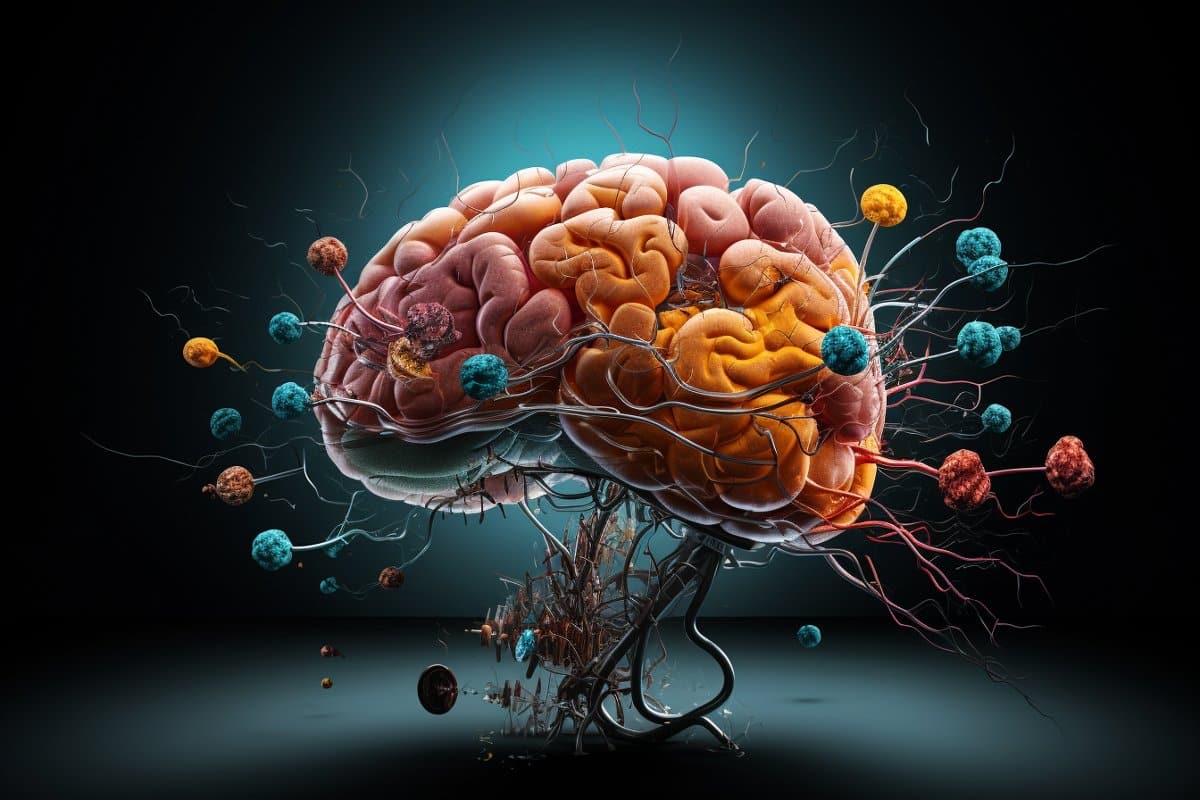Summary: Researchers have identified the crucial mechanism behind the brain’s ability to recycle older proteins, a key factor in maintaining cognitive health. The study shows that a specific pathway allows for the efficient transport and recycling of proteins, ensuring neuronal integrity and function.
The team used advanced imaging and computational techniques to uncover how neurons regulate the replacement of aging proteins, a process vital to preventing cognitive decline. With this discovery, the door opens for potential advancements in tackling brain health and neurological disorders.
Key Facts:
- The study reveals how neurons regulate the recycling of older proteins, ensuring efficient neural communication.
- Advanced computational programming by undergraduate Nathan Landers was crucial to understanding this process.
- This mechanism is pivotal for preventing neuron degradation and maintaining cognitive function over time.
Source: Auburn University
Researchers at Auburn University have made a groundbreaking discovery that sheds light on how our brain cells manage to efficiently replace older proteins. This process is crucial for maintaining effective neural communication and ensuring optimal cognitive function.
Published in the prestigious journal, Frontiers in Cell Development and Biology, the study titled, “Recently Recycled Synaptic Vesicles Use Multi-Cytoskeletal Transport and Differential Presynaptic Capture Probability to Establish a Retrograde Net Flux During ISVE in Central Neurons”, details how older proteins in brain cells are transported for recycling.

Dr. Michael W. Gramlich, an Assistant Professor of Physics at Auburn University, explains, “Cells in the brain regularly replace older proteins to maintain efficient thinking. However, the exact mechanism of how older proteins are targeted to be transported to where they need to be recycled remained an open question until now.
“Our research shows a specific pathway regulates how older proteins are transported to the cell body where they are recycled, allowing new proteins to take their place.”
This discovery has profound implications for understanding brain health. Without efficient protein replacement, neurons in the brain would degrade over time and become less efficient. Dr. Gramlich adds, “Our work reveals a regulatable pathway that can be modulated to accommodate increased or decreased brain function. This prevents the degradation of neurons over time.”
The study was a collaborative effort involving graduate student Mason Parkes and undergraduate student Nathan Landers. Impressively, as an undergraduate student, Nathan Landers performed advanced computational programming that was pivotal in understanding the results of this research.
“We were surprised to find that a single simple and regulatable mechanism determines when older proteins are chosen to be recycled,” Dr. Gramlich remarks, emphasizing the significance of their findings.
This publication is part of a collection focusing on trafficking and neural plasticity and learning. The researchers utilized a combination of techniques, including fluorescence microscopy, hippocampal cell cultures, and computational analyses, to determine the mechanisms that mediate older synaptic vesicle trafficking back to the cell body.
The Auburn University research team is excited about the potential applications of their findings in furthering our understanding of brain health and degenerative neurological conditions. Their groundbreaking work is a testament to the innovative research being conducted at the institution.
About this neuroscience research news
Author: Mary Prater
Source: Auburn University
Contact: Mary Prater – Auburn University
Image: The image is credited to Neuroscience News
Original Research: Open access.
“Recently recycled synaptic vesicles use multi-cytoskeletal transport and differential presynaptic capture probability to establish a retrograde net flux during ISVE in central neurons” by Michael Gramlich et al. Frontiers in Cell and Developmental Biology
Abstract
Recently recycled synaptic vesicles use multi-cytoskeletal transport and differential presynaptic capture probability to establish a retrograde net flux during ISVE in central neurons
Presynapses locally recycle synaptic vesicles to efficiently communicate information. During use and recycling, proteins on the surface of synaptic vesicles break down and become less efficient.
In order to maintain efficient presynaptic function and accommodate protein breakdown, new proteins are regularly produced in the soma and trafficked to presynaptic locations where they replace older protein-carrying vesicles.
Maintaining a balance of new proteins and older proteins is thus essential for presynaptic maintenance and plasticity. While protein production and turnover have been extensively studied, it is still unclear how older synaptic vesicles are trafficked back to the soma for recycling in order to maintain balance.
In the present study, we use a combination of fluorescence microscopy, hippocampal cell cultures, and computational analyses to determine the mechanisms that mediate older synaptic vesicle trafficking back to the soma. We show that synaptic vesicles, which have recently undergone exocytosis, can differentially utilize either the microtubule or the actin cytoskeleton networks.
We show that axonally trafficked vesicles traveling with higher speeds utilize the microtubule network and are less likely to be captured by presynapses, while slower vesicles utilize the actin network and are more likely to be captured by presynapses. We also show that retrograde-driven vesicles are less likely to be captured by a neighboring presynapse than anterograde-driven vesicles.
We show that the loss of synaptic vesicle with bound molecular motor myosin V is the mechanism that differentiates whether vesicles will utilize the microtubule or actin networks.
Finally, we present a theoretical framework of how our experimentally observed retrograde vesicle trafficking bias maintains the balance with previously observed rates of new vesicle trafficking from the soma.







